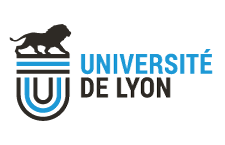ECOFECT > Presentation > Teams
Oncogenic Herpesviruses
Inserm U1111 - UMR CNRS 5308
- Address :
- International Center for Infectiology Research (CIRI)
- Email :
- henri.gruffat@ens-lyon.fr
- Trusteeship :
- Inserm, CNRS, ENS Lyon, UCBL
Organization
Team leader: Henri GruffatAxe(s) of research
Our group’s main interest is to understand the mechanisms of infection, persistence and reactivation of oncogenic herpesviruses such as the Epstein-Barr virus (EBV).
More than 90% of the adult human population is infected by EBV. Infection takes place early in life and then persists life-long. EBV is the causative agent of infectious mononucleosis but most EBV carriers have shown no symptoms or pathology at the time of infection. However, EBV is strongly associated with a number of human tumors including nasopharyngeal carcinoma (NPC), gastric cancer, Burkitt’s lymphoma (BL), immunosuppression-related lymphoma, Hodgkin’s disease, and others. Several cofactors, such as malaria in the case of BL or environment (diet) in the case of NPC, have been shown to cooperate with EBV in the development of these cancers.
In vitro, infection of resting human B-lymphocytes by EBV induces their proliferation (transformation). Infected cells carry several copies of the EBV episome and express a subset of viral genes. These genes contribute to the induction and maintenance of EBV-driven B-cell proliferation. In certain conditions, the virus productive cycle (i.e. leading to the production and release of new virions) can be reactivated.
In our lab, we are studying the mechanisms by which EBV induces B cell transformation and the regulation of the switch between latent persistence and virus replication. We focus our study on the biological role of some key viral genes that contribute to these processes at the genetic, molecular and cellular levels.
One of the principal approaches we are using to dissect these mechanisms and to understand the complex virus-host cell interactions is identification of the protein (viral and cellular) interaction networks involved.
Key words: Epstein-Barr virus, EBV, Herpesvirus, Cell transformation, Gene expression, Virus/host cells interactions
More than 90% of the adult human population is infected by EBV. Infection takes place early in life and then persists life-long. EBV is the causative agent of infectious mononucleosis but most EBV carriers have shown no symptoms or pathology at the time of infection. However, EBV is strongly associated with a number of human tumors including nasopharyngeal carcinoma (NPC), gastric cancer, Burkitt’s lymphoma (BL), immunosuppression-related lymphoma, Hodgkin’s disease, and others. Several cofactors, such as malaria in the case of BL or environment (diet) in the case of NPC, have been shown to cooperate with EBV in the development of these cancers.
In vitro, infection of resting human B-lymphocytes by EBV induces their proliferation (transformation). Infected cells carry several copies of the EBV episome and express a subset of viral genes. These genes contribute to the induction and maintenance of EBV-driven B-cell proliferation. In certain conditions, the virus productive cycle (i.e. leading to the production and release of new virions) can be reactivated.
In our lab, we are studying the mechanisms by which EBV induces B cell transformation and the regulation of the switch between latent persistence and virus replication. We focus our study on the biological role of some key viral genes that contribute to these processes at the genetic, molecular and cellular levels.
One of the principal approaches we are using to dissect these mechanisms and to understand the complex virus-host cell interactions is identification of the protein (viral and cellular) interaction networks involved.
Key words: Epstein-Barr virus, EBV, Herpesvirus, Cell transformation, Gene expression, Virus/host cells interactions
Domains
Virology
Molecular biology
Oncology
Molecular biology
Oncology



 Welcome
Welcome Communication
Communication Contacts
Contacts Job offers
Job offers links
links WebAdmin
WebAdmin